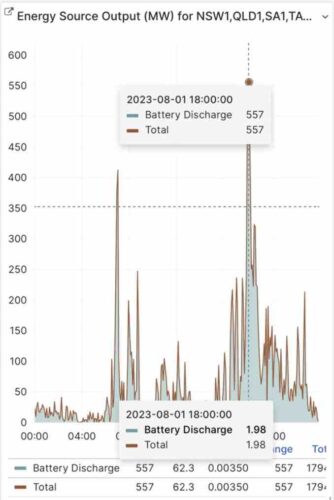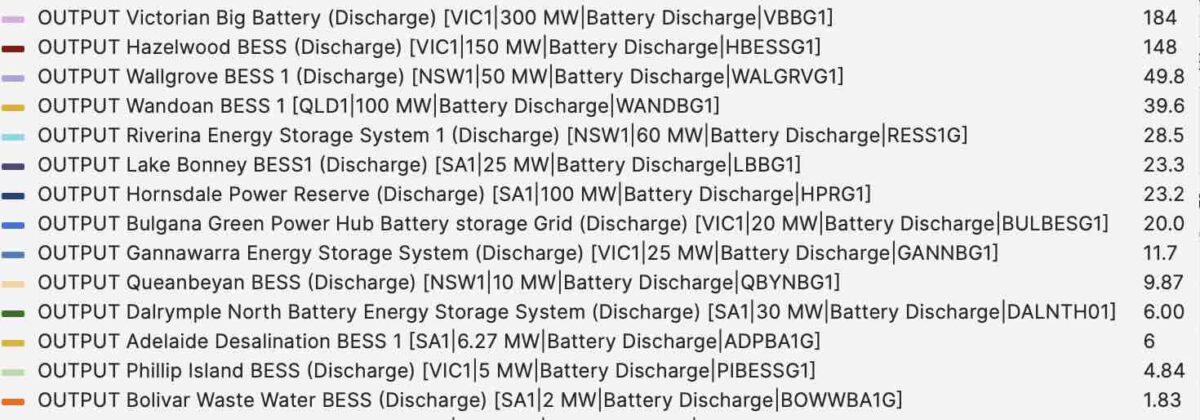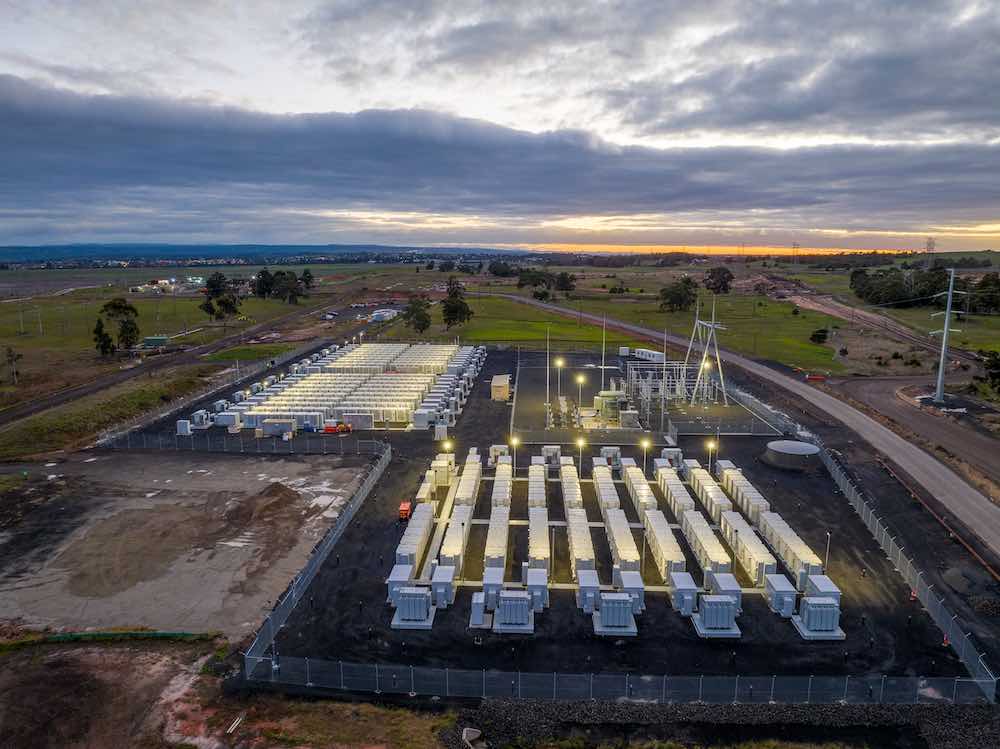The output of Australia’s rapidly increasing portfolio of big battery facilities set a new milestone on Tuesday – discharging more than half a gigawatt for the first time as the sun set on the country’s main grid, and wind power also came to a near standstill.
The discharge of battery storage reached a peak output of 557MW at 6pm AEST on Tuesday, far higher than the previous peak of 488MW set on July 22.
At the time it accounted for 2 per cent of total demand on the National Electricity Market, but in Victoria – where it reached a new peak of 369MW at 6pm – it accounted for 5.4 per cent of total demand, some 10 times more than the total output of wind and solar at the time.

Hydro, another form of storage, was also in high use at the time, particularly in Victoria, as prices across the market soared in response to the evening peak, the setting of the sun which took away solar power, and the easing wind conditions.
The biggest providers of battery output at the time included some of the more established names, such as the Hornsdale Power Reserve, and the Victoria Big Battery, both owned and operated by Neoen Australia.
It also included the newly commissioned Hazelwood big battery, located at the site of the former coal generator, the Queanbeyan battery in the ACT, and the newly connected Riverina battery projects in NSW next to the Darlington Point solar farm.
Some newly connected but yet to operate projects, including the Torrens Island and the Tailem Bend batteries in South Australia, and the Bouldercombe battery in Queensland, remained idle.

The new benchmark for instantaneous output of battery storage is significant not just for the number itself, but also for the fact that big batteries are quickly moving from the first market they targeted – frequency control – to energy arbitrage, particularly as volatility increases on the main grid.
Victoria, for instance, had reached a new peak of 80 per cent wind on Sunday morning, when the output of wind soared above 3,200MW. But by 6pm on Tuesday evening it had fallen to 35MW and later that evening to a low of less than 5MW.
Similar calm conditions hit South Australia, where the output of wind hit less than 10MW on Tuesday evening, sending the wholesale market price to the new market cap of $16,600MWh at 6.35pm, as diesel generators were briefly switched on and the output of battery storage also jumped above 100MW.










